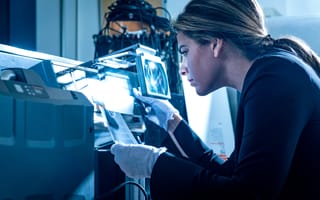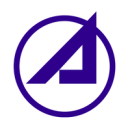Sometimes when a task feels daunting or a concept seems opaque, we comfort ourselves with a simple affirmation: It’s not rocket science. Websites breakdown. Apps need updates. It’s not like we’re putting astronauts in orbit.
At The Aerospace Corporation, though, engineers have to be ready to embrace just that challenge. It is rocket science. Aerospace’s diverse group — with backgrounds as varied as digital art and industrial design — is tackling important challenges and researching and developing the products and processes that literally put people and objects into space.
“For someone new to this, it is a lot of learning and exposure to new principles and terminology,” Jennifer Lee, manager, engineering applications, said. “Just the number of acronyms on a project can be overwhelming.” Thankfully, Lee noted, Aerospace has ample opportunities for its tech professionals to learn, expand on their skill sets and become adept in all things space.
Read on to learn more about the company and how you can join the team.

What kind of unique experiences are represented at Aerospace?
Our job involves us building 2D and 3D custom visualizations utilizing game engines and commercial immersive technologies to explain space concepts. This requires us to hire a broad range of candidates from a diverse set of schools.
On top of computer science degrees, several team members have concentrations in game design, real-time interactive simulation, entertainment arts and engineering or hold degrees from technology and game design-specific schools. These game-oriented team members have experience working at independent game studios and bring that industry knowledge to our workflow. Several team members have degrees in industrial design, film and digital arts. To round this out, we have team members with degrees in mechanical and aerospace engineering. The team is able to bring their passion and experience for gaming and art to create interactive visual experiences.
The different engineering disciplines at Aerospace guide and verify that the experiences created are accurately represented.
In your experience, what are the steepest learning curves for new hires who come from outside your industry?
The hardest part of joining Aerospace and not having an aerospace engineering degree or experience is learning how space works. We create visual experiences showing objects in orbit, explaining features on spacecraft and understanding what goes into a launch or ground system.
For someone new to this, it is a lot of learning and exposure to new principles and terminology. Just the number of acronyms on a project can be overwhelming. At Aerospace, there are many subject matter experts who are more than happy to share their knowledge and explain how space systems perform. The ability to understand that information, incorporate that information into the tools that we develop using techniques learned from previous experience elsewhere and convey that knowledge to non-experts can be challenging.
At Aerospace, there are many subject matter experts who are more than happy to share their knowledge and explain how space systems perform.”
How does Aerospace onboard and support new hires who come from outside your industry?
A new hire is usually paired with a team member with a similar skill set so that they can work through tasks together and build an open relationship to ask questions. Through team and customer meetings and interactions, the new hire can learn about the project and the impact of the work, and they can gather requirements for their project milestones.
Aerospace does offer overview classes to learn the basics about space, launch and ground concepts. This helps with the top-level knowledge needed to understand where the customer is coming from.
The real learning is done by meeting subject matter experts at the company, being thrown onto an experienced team and spending the time to create solutions with the skills that the new hire has from past experience. Our team tries to stay current with the software and technology used by industry, and we are appreciative of suggestions from new hires who offer new or optimized approaches to our development. Bringing in new talent from industry helps to expand our skill sets and provides more solutions for our customers.







